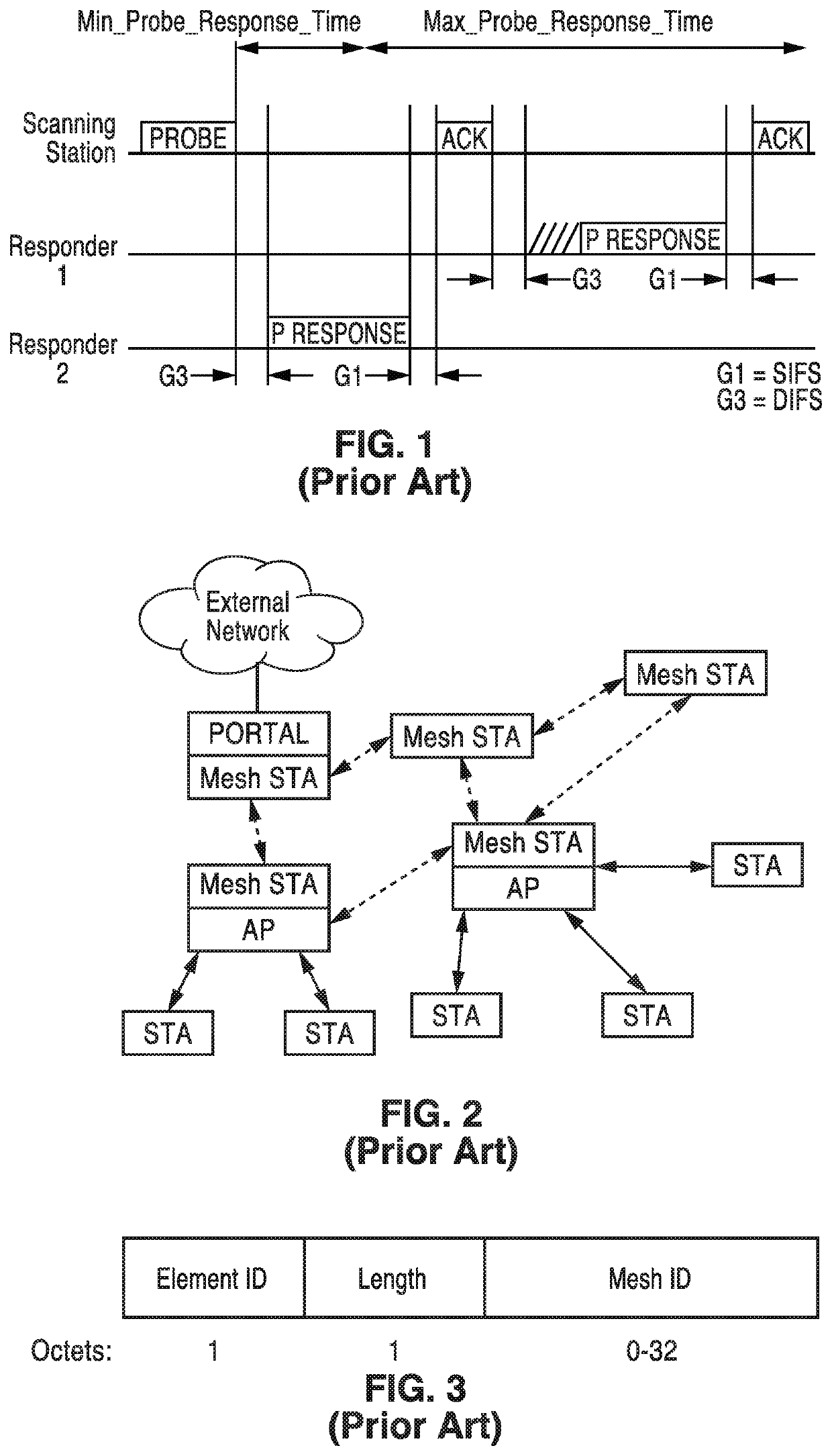Allocation and directional information distribution in millimeter wave WLAN networks
a technology of directional information and millimeter wave, applied in the direction of wireless communication, duplex signal operation, assessment restriction, etc., can solve the problems of high data demand, high loss of free-space path, and high penetration
- Summary
- Abstract
- Description
- Claims
- Application Information
AI Technical Summary
Benefits of technology
Problems solved by technology
Method used
Image
Examples
Embodiment Construction
[0049]When used in this disclosure the following terms have the meanings generally described below.
[0050]A-BFT: Association-Beamforming Training period; a period announced in the beacons that is used for association and beamform (BF) training of new stations (STAs) joining the network.
[0051]AP: Access Point; an entity that contains one station (STA) and provides access to the distribution services, through the wireless medium (WM) for associated STAs.
[0052]Beamforming (BF): a directional transmission from a directional antenna system or array, and not an omni-directional or quasi-omni antenna, for determining information for improving received signal power or signal-to-noise ratio (SNR) at the intended receiver, and under which stations can obtain information for correlating time and directional allocation information.
[0053]BSS: Basic Service Set; a set of stations (STAs) that have successfully synchronized with an AP in the network.
[0054]BI: the Beacon Interval is a cyclic super fr...
PUM
 Login to View More
Login to View More Abstract
Description
Claims
Application Information
 Login to View More
Login to View More - R&D
- Intellectual Property
- Life Sciences
- Materials
- Tech Scout
- Unparalleled Data Quality
- Higher Quality Content
- 60% Fewer Hallucinations
Browse by: Latest US Patents, China's latest patents, Technical Efficacy Thesaurus, Application Domain, Technology Topic, Popular Technical Reports.
© 2025 PatSnap. All rights reserved.Legal|Privacy policy|Modern Slavery Act Transparency Statement|Sitemap|About US| Contact US: help@patsnap.com



